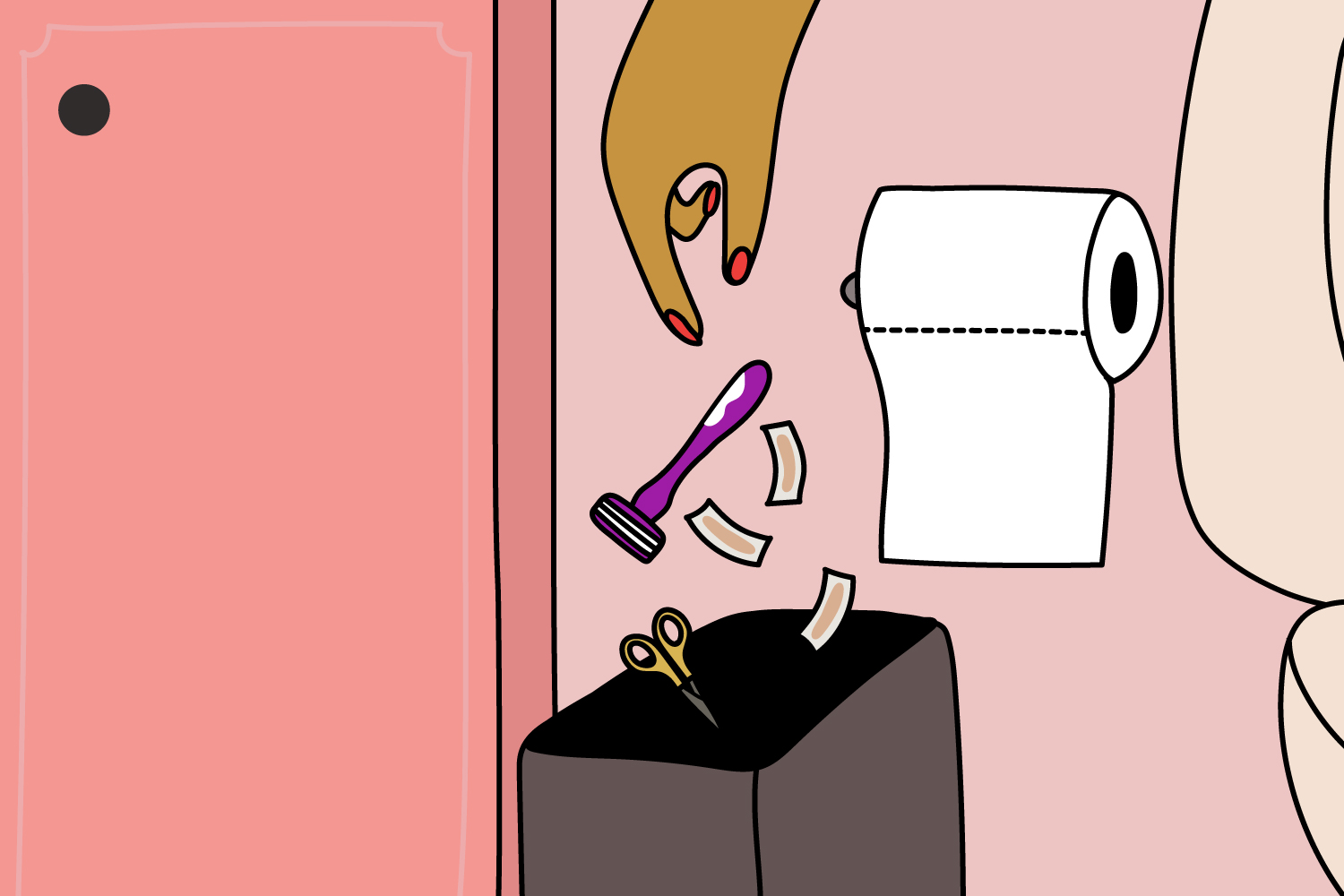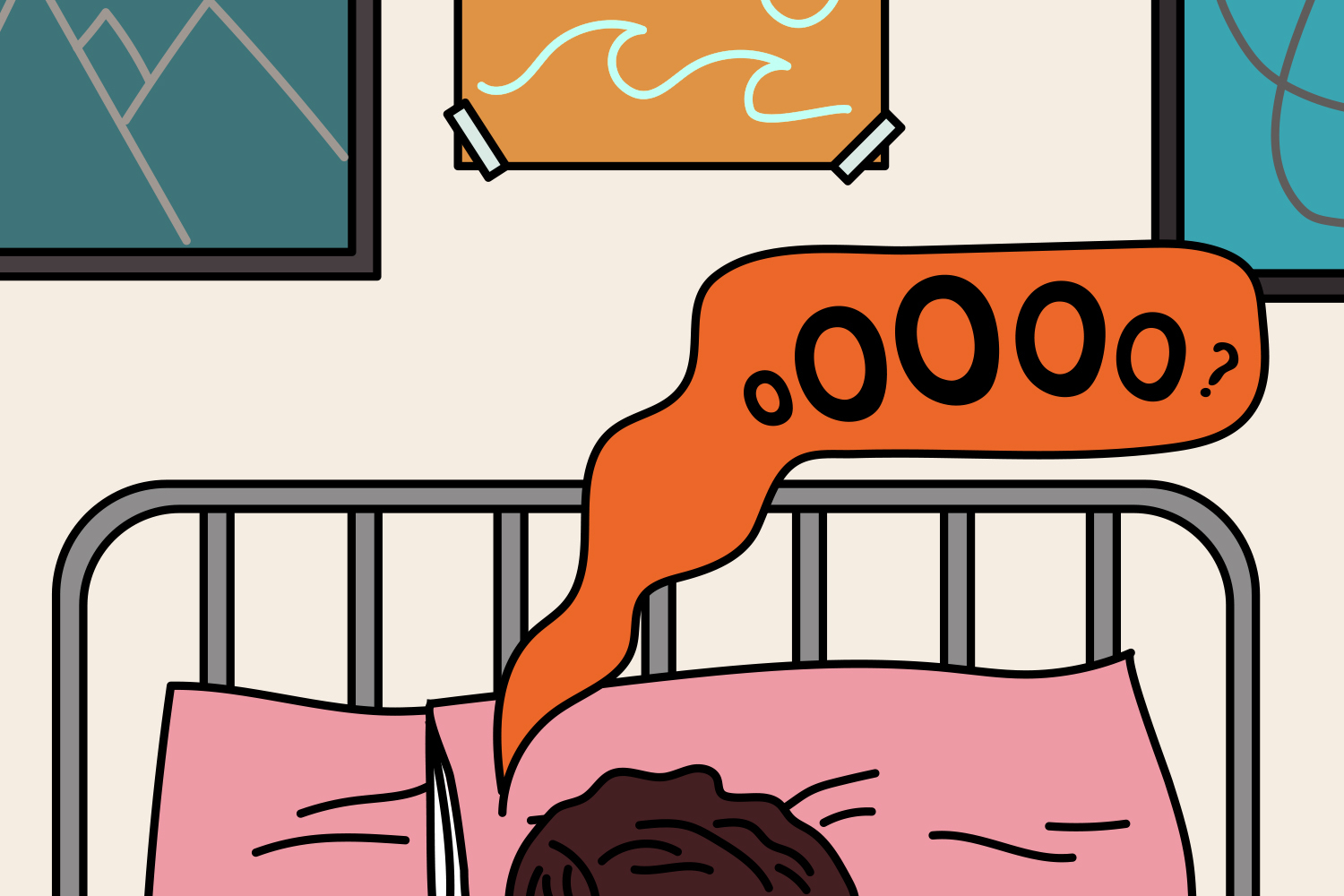About 15 years ago, John, a pseudonymous human rights lawyer from Australia, now in his mid-fifties, began experiencing a loss of sensation in his penis during intercourse. He’d already had intermittent problems with intimacy, sometimes withdrawing from his wife’s touch when it focused on his genitals. Still, he and his wife thought the penis problem “normal” at first, perhaps something that came with age.
But by 2016 he had little to no interest in sex, and when he did, he often could not achieve an erection. After growing more alarmed by the issues, his wife took charge, conducting research about impotency and other sexual health concerns on the internet. She eventually came around to articles covering the potential side effects of circumcision, knowing that John had long held a grudge against his parents for circumcising him at birth.
He’d seen his first “intact” penis when he was 19, while showering at a gym. When he later asked his parents why they’d opted to circumcise him, he received what he considers “bizarre” reasoning in response: “To look like your father,” they said.
“Nobody in their right mind would do that to a child,” says John, who, at one point through sobs, claims he developed “very real” trauma from the procedure. He adds that the resulting denial of additional sexual pleasure “hurts deeply.”
Continuing down the rabbit hole of circumcision web content, John and his wife soon uncovered information about foreskin restoration, where men use one or a series of methods and gizmos to grow new skin on the penis, gradually stretching it out to a desired length over the shaft and head, mimicking their original form. John decided to give it a shot.
He began massaging and pulling on his penis’s skin at and around the point where his foreskin had been lobbed off as an infant. After eight or 10 months of loosening scar adhesions and cultivating skin flexibility, in 2017 he purchased the popular TLC-X Tugger, a device that costs $89.50 today, and uses suction cup-like dynamics to generate what its maker calls a “gentle tension” on a growing foreskin. It’s marketed as comfortable and compact enough to be worn day and night, something the most eager of restorers happily do.
Last year, taking advantage of a pandemic-induced work-from-home lifestyle shift, John reverted back to manual methods, continuously pulling on his regenerating foreskin across hourly sessions that last two or three minutes. He stuffs his penis into a silicon retaining cone when not engaging in the foreskin physical therapy, and when he’s through with work responsibilities, he works out his foreskin for another hour straight, keeping all this up on weekends, as well.
When not at home for long stretches of time, he explains, “Every now and then I’ll make off to the restroom for two or three minutes, whether I have [to] pee or not.”
Since redoubling his efforts beginning last May, his foreskin has grown from a length that supplied what he calls “half coverage” of his glans to almost full coverage.
“I don’t have coverage over the end,” John says. “I’m still working on that.”
Sadly, John’s wife passed away in 2018, so he cannot testify to any enhanced sexual pleasure now that he’s nearly completely restored his foreskin after years of toil. However, “psychologically,” he says, he feels like “a whole man” once again.
“If I had known about foreskin restoration in my twenties, I’d have undertaken it back then,” John says.
He’s hardly alone on his mission, and part of the reason for his very personal achievement is the tutorials and support exhibited in the foreskin restoration community, which is particularly active on Reddit. The forum devoted to the topic has enjoyed tremendous growth of late — and at a much faster pace than what’s to be expected in actual foreskin regeneration, apparently. Recently topping 17,500 followers, the popularity of r/foreskin_restoration is commensurate with the public’s interest in the real-life process, says one of the subreddit’s moderators, who asked to be referred to by his first name, Hans. He believes that increased media coverage of the process has buoyed the interest.
“It gets you thinking, and then you do your own research on it,” says Hans of the growing media exposure. Once the uninitiated venture into this world, a profound welcome mat awaits them.
Likening his fellow restorers to members of the bodybuilding community, Reddit user LedgerWar, who asked to be referred to by his handle, says that in the various foreskin restoration forums, “Everyone is there to encourage each other and push each other.”
LedgerWar is an active poster in the subreddit and just began the foreskin restoration process himself a couple months ago. A 30-year-old resident of California who works in IT, he says he has an uncut male partner and likes the way fully intact penises look. LedgerWar wishes to extend his foreskin all the way past the glans, hoping to experience all the sexual pleasure his intact partner can. However, like seemingly every element of the circumcision debate — including whether or not the procedure can cause psychological trauma, as John and others claim — there are conflicting studies that say foreskin removal takes away sexual sensation, while others indicate the procedure has no impact on sex, and possibly even enhances pleasure.
LedgerWar wears his device, the CAT II Q, which is similar to the TLC-X Tugger, for 12 to 15 hours a day. Like John, LedgerWar expects his desired restoration to take years, but he giddily reports that there’s already loosening skin around his shaft, and says he appreciates feeling its emerging stretchiness and added sensitivity after removing the CAT II Q each day. His intact boyfriend supports his journey and is grateful he doesn’t have to endure all the effort it takes to regenerate a foreskin.
Despite recalling that his father is uncircumcised, LedgerWar believes that, like so many other American males, his parents opted to have him cut because it’s the cultural norm. According to a 2010 global review of circumcision conducted by the United Nations’ HIV/AIDS-focused programme, 80 percent of adult males in the U.S. are cut, making it the English-speaking country where circumcision is practiced most widely. Australia, John’s homeland, comes in second, where the rate is about 59 percent. LedgerWar also thinks there may have been sanitary concerns on the part of his parents when the question of circumcision came up. Aware of that widespread worry, John volunteers he has no smegma build up on his genitals because he simply cleans his penis daily with soap and water — a hygiene routine no different than what the Mayo Clinic recommends for new parents who’ve decided to keep their baby boys intact.
Regardless of their reasoning, however, LedgerWar wishes his parents had left such considerations to him, for when he was of a mind to make decisions like that on his own.
“It’s messed up,” LedgerWar says of the choice his parents made on his behalf. “You’re not just cutting off a fingernail; you’re removing a piece of your skin, a piece of you.”
“We as infants are not given the choice,” Hans, another restorer, says. “It’s decided for us and I think that’s the biggest problem.”
Hans insists he’s not anti-circumcision, but against routine infant circumcision because consent on the part of the individual going under the knife is impossible to secure. Another issue with routine infant circumcision that Hans and other sources I spoke to pointed out is that it’s not regulated, in terms of the devices used and the amount of skin that should be removed. Penises grow over time of course, so too much foreskin can easily be removed, which could cause functionality problems later in life.
Due to excessive dry skin that had gone unmoistened by a foreskin over the course of his life, Hans says that during sex he encountered a “half-second of pleasure” that gave way to “incredible discomfort and pain.”
His restoration reversed all that, however.
“How this actually turned out was beyond anything I could have dreamed of,” Hans says of his second foreskin.
Another restorer I spoke to, “M,” says sex before and after restoration is “like the difference between listening to music in mono then going to surround sound.”
“It isn’t any louder, there’s just more detail,” M adds. He’s enjoyed improved gliding and boosted sensitivity, and says he’s only a third of the way through his restoration.
Technically, the CDC does not recommend with a capital “R” that parents circumcise their newborn boys. However, the organization urges doctors to push parents in that direction, saying that there’s an increased chance of urinary tract infections, penile cancer, and other skin conditions if circumcision is not executed. The CDC also says circumcision helps prevent HIV as well as some STIs. All of these apparent benefits should begin at birth because, the CDC says, that is when the procedure is “safer, less expensive and heals more rapidly than circumcision performed on older boys, adolescent males and men.”
Some adults who are upset about their missing foreskin can seek medical help to regenerate one as well. David Shafer, a board-certified plastic surgeon with a private practice in New York City, says his penis augmentation procedure with dermal fillers attracts some clients interested in foreskin restoration, not just enhanced girth and length. He says the process adds volume to the subcutaneous tissue around the circumference of the penis, expanding the skin and helping to create a “pseudo foreskin formation.”
“It’s kind of an added benefit to the procedure that we do,” Shafer says.“The larger the augmentation we do, the more stretching of the skin you get.” He says oftentimes his clients will return to his office saying things like “Hey, I didn’t even realize this [was going to happen], but it’s fantastic that I have this foreskin I never had before.” Procedures like this, according to RealSelf, an information platform about cosmetic surgery, cost about $6,000, but 83 percent of the site’s reviewers say the enhancement is “worth it.”
For those desiring a regeneration of their foreskin who don’t have thousands of expendable dollars in their bank account, they have their devices to rely on, as well as their hands. There will also be an extensive wait before they can once again call themselves “restored,” but, for the truly devoted, it’s just all part of the experience.
“It is going to be a long, hard process,” says LedgerWar of his restoration journey. “But it’s going to be worth it and I’m excited to get it back.”
Whether you’re looking to get into shape, or just get out of a funk, The Charge has got you covered. Sign up for our new wellness newsletter today.





























